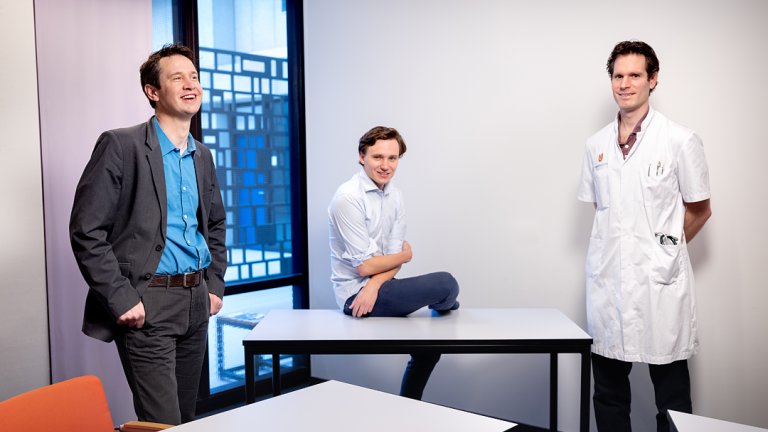First report on venous thromboembolism in COVID-19
We immediately felt the need to determine how often this complication occurs, both in the most severe cases admitted to the intensive care unit and in patients admitted to the ward. Fueled by the unprecedentedly high number of admissions, we were swiftly able to publish one of the first reports on the risk of venous thromboembolism (VTE) in COVID-19, in a collaboration with many colleagues from the departments of internal medicine, pulmonology, radiology and intensive care. This paper was published on a preprint server before peer-review, where it was downloaded over 800 times in the first 12 days. The final peer-reviewed paper in the Journal of Thrombosis and Haemostasis was cited 340 times in just the first year. It was a unique time in which we continued to gain further insights that could be applied in clinical care almost immediately. And in fact, it is not over yet. We are still not sure which prophylactic dose of anticoagulants optimally balances the risks of thrombosis and bleeding in COVID-19 patients.
We immediately felt the need to determine how often venous thromboembolism in COVID-19 occurs.
Addressing thrombosis-specific questions in COVID-19 patients
With the early understanding that COVID-19 could be with us for a longer time than initially expected, the CovidPredict cohort study was quickly initiated during the first wave, by Martijn Beudel (neurologist location AMC), to facilitate research on COVID-19. This study has currently enrolled more than 2,500 COVID-19 patients and serves as a basis for further studies addressing thrombosis-specific questions in different patient groups with COVID-19. On a national level, we are participating in the Dutch COVID and Thrombosis Coalition (DCTC), a platform supported by grants from ZonMw and the Netherlands Thrombosis Foundation and coordinated by Marieke Kruip, hematologist in the Erasmus MC.

Finally, in collaboration with Andries van der Meer from the Technical University Twente, supported by a grant from ZonMw, we are working on an in vitro model called “Blood vessel-on-a-chip” in order to further investigate which specific factors in COVID-19 induce the highly prothrombotic state. With these studies, we aim to increase our understanding of the pathophysiology of COVID-19 related thrombosis and to find the optimal way of preventing these potentially fatal clots.
This article is published in June 2021 in the ACS magazine 2021, page 17.


